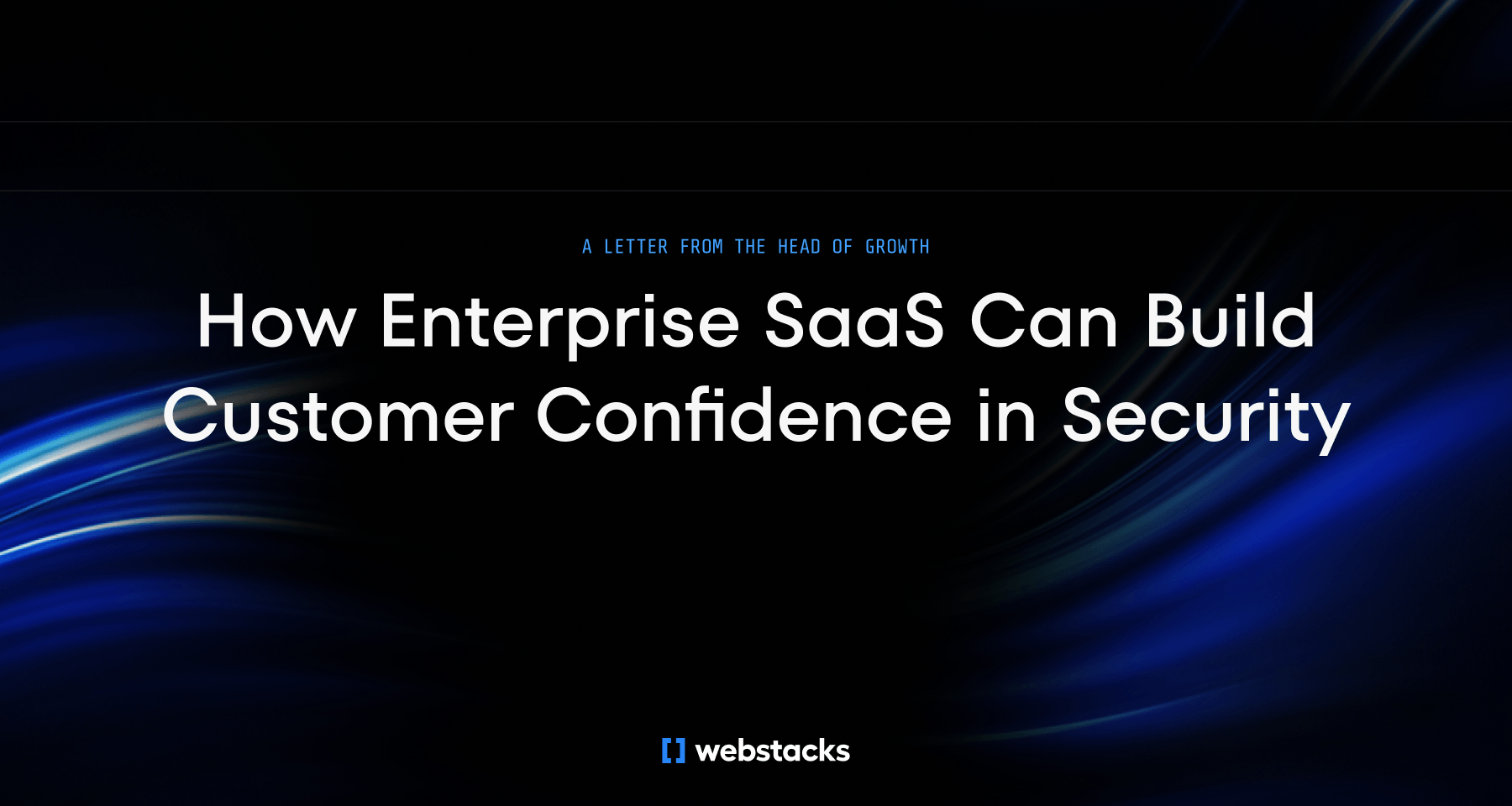A MedTech content strategy involves creating and distributing valuable, relevant content to attract and engage your target audience. It’s not just about selling products; it’s about educating and building trust.
Key components include defining your target audience, setting clear goals, conducting a content audit, and creating a content calendar.

4 Essential Types of Content for Medtech Marketing
Keep reading to learn how to level up your B2B blog strategy to drive engagement and establish your brand as an industry leader.
Blog Posts
Blog posts play a significant role in educating and engaging your target audience. They provide a platform to share industry insights, latest trends, and practical tips that resonate with your readers. Well-crafted blog posts can position your company as a thought leader in the MedTech space.
Best practices for writing medtech blog posts include:
- Focus on relevant topics: Address current issues, advancements, and innovations in the MedTech industry.
- Use clear, concise language: Avoid jargon and make complex topics accessible to a broader audience.
- Incorporate visuals: Use images, infographics, and charts to make your content more engaging.
- Optimize for SEO: Include relevant keywords, meta descriptions, and internal links to improve search engine visibility.
- Encourage interaction: End with questions or calls to action to foster reader engagement and comments.
Case Studies
Case studies demonstrate the value of your products through real-world examples. They provide detailed accounts of how your solutions have addressed specific challenges, showcasing their effectiveness and reliability.
Elements of a compelling Medtech case study:
- Clear problem statement: Define the issue faced by the client or patient.
- Detailed solution: Describe how your product or service provided a solution.
- Quantifiable results: Include data and metrics that highlight the impact of your solution.
- Client testimonials: Add quotes from satisfied clients to build credibility.
- Visual aids: Use before-and-after images, charts, and graphs to illustrate the results.
Keeping your updated product documentation can support compelling case studies by providing accurate and current information.
Whitepapers and eBooks
Whitepapers and eBooks offer in-depth exploration of medtech topics and trends. They serve as comprehensive resources that can educate your audience and establish your authority in the field.
Using whitepapers and eBooks for lead generation:
- Choose relevant topics: Focus on subjects that address the pain points and interests of your target audience.
- Provide valuable insights: Offer detailed analysis, research findings, and expert opinions.
- Include a strong introduction: Capture the reader's attention with a compelling opening that outlines the content's value.
- Design for readability: Use headings, subheadings, bullet points, and visuals to break up text and enhance readability.
- Gate the content: Require users to provide contact information to download the whitepaper or eBook, helping you capture leads.
To maximize the reach of your whitepapers and eBooks, learn how to leverage B2B content syndication effectively.
Webinars and Videos
Webinars and videos engage audiences through interactive content formats. They allow you to present complex information in an easily digestible format and foster real-time interaction with your audience.
Tips for creating effective Medtech webinars and videos:
- Choose engaging topics: Select subjects that are relevant and interesting to your target audience.
- Plan your content: Outline your key points and structure your presentation to maintain a logical flow.
- Use high-quality visuals: Incorporate slides, animations, and video clips to enhance your presentation.
- Engage your audience: Encourage questions and participation through polls, Q&A sessions, and interactive elements.
- Promote your webinar: Use email marketing, social media, and your website to attract attendees.
- Follow-up: Send a thank-you email with a link to the recorded webinar and additional resources to keep the conversation going.
4 Simple Steps to Develop a Medtech Content Strategy
1. Define Your Target Audience
Start by researching and creating buyer personas. Understand who your ideal customers are, what their pain points are, and what they seek in medtech solutions. Gather demographic data, professional roles, and behavioral insights.
Use surveys, interviews, and analytics tools to collect this information. With detailed personas, you can tailor your content to meet their specific needs and preferences.
2. Set Clear Goals and Objectives
Align your content strategy with your business goals. Determine what you want to achieve, whether it's brand awareness, lead generation, or customer retention. Establish Key Performance Indicators (KPIs) to measure success.
These could include metrics like website traffic, engagement rates, and conversion rates. Clear goals and KPIs provide direction and help track progress.
3. Conduct a Content Audit
Analyze your existing content assets. Identify what you already have, what performs well, and what needs improvement. Conduct a B2B competitor analysis guide to evaluate your competition’s content strategy and find areas where you can outperform them. Look for gaps in your content that could be filled to better serve your audience.
This process helps you understand your content landscape and find opportunities for new content that aligns with your strategy.
4. Create a Content Calendar
Plan and schedule your content creation with a content calendar. Outline what content will be published, when, and on which platforms. This ensures consistent publication and distribution, keeping your audience engaged. A well-organized calendar helps manage resources, avoid content gaps, and maintain a steady flow of valuable information. Implementing a successful global content strategy involves planning and scheduling content effectively to reach international markets.

5 Best Practices for Medtech Content Creation
Creating content for the medtech industry requires a strategic approach that balances regulatory compliance, educational value, and engagement. Here are some best practices to ensure your content resonates with your audience and meets industry standards:
1. Understand Regulatory Requirements And Limitations
Familiarize yourself with the regulations governing medtech content. This includes FDA guidelines, HIPAA compliance, and other relevant standards. Ensure all claims are substantiated and avoid making unverified statements about your products. Staying within these boundaries protects your company from legal issues and builds trust with your audience.
2. Focus On Educating And Providing Value To Readers
Prioritize content that informs and educates your audience. Address common pain points, provide insights into industry trends, and offer practical advice. This approach positions your company as a thought leader and helps build a loyal following. Avoid overly promotional language; instead, focus on delivering actionable information that readers can use.
3. Optimize Content For Search Engines (Seo)
Implement SEO best practices to increase the visibility of your content. Use relevant keywords naturally within your text, include meta descriptions, and optimize your headlines. Ensure your website is mobile-friendly and has fast loading times. These elements help improve your search engine rankings and make it easier for potential customers to find your content.
4. Incorporate Visuals And Multimedia Elements
Enhance your content with visuals like images, infographics, and videos. These elements make your content more engaging and easier to understand. Use diagrams to explain complex concepts and videos to demonstrate product features. High-quality visuals can significantly improve user experience and retention rates.
5. Include Clear Calls-To-Action (Ctas)
Guide your readers toward the next step with clear and compelling CTAs. Whether it's downloading a whitepaper, signing up for a webinar, or contacting your sales team, make sure your CTAs are specific and easy to follow. Place them strategically within your content to maximize conversions without disrupting the reader's experience.
How to Measure the Success of Your Medtech Content Strategy
Key Performance Indicators (KPIs)
To measure the success of your Medtech content strategy, focus on key KPIs like website traffic, engagement, lead generation, and conversion rates. Metrics such as page views, session duration, and bounce rates help gauge content effectiveness.
High traffic and longer sessions show audience interest, while low bounce rates indicate valuable content. Track leads through form submissions, downloads, and sign-ups, and monitor conversion rates to see how well your content turns visitors into leads or customers.
Analyzing and Refining Strategy
Regularly review KPIs to spot trends and improve. If high-traffic content has low conversion rates, refine CTAs or update information. Stay current with industry trends and audience feedback to keep content relevant and effective.
5 Medtech Content Strategy Examples to Learn From
Example 1: Medtronic's Thought Leadership Blog
Medtronic’s thought leadership blog positions it as a leader in the medtech industry by providing insights into cutting-edge medical technology, research, and trends. With a focus on innovations like robotic surgery and AI in healthcare, the blog keeps the audience engaged with regular updates.
By covering regulatory changes and addressing the latest medical advancements, Medtronic builds trust and credibility, encouraging healthcare professionals to rely on them as an authoritative source.
Example 2: Stryker's Interactive Product Demo Videos
Stryker’s interactive product demo videos are a powerful tool for showcasing their medical devices. The videos highlight features like precision and ease of use, demonstrating their value in real-world clinical environments. By integrating clickable links and embedded forms, Stryker boosts user engagement and allows potential customers to access detailed product information.
These videos are widely shared on their website, across social media channels, and during sales pitches, helping healthcare providers better understand their innovations.
Example 3: Philips Healthcare's Customer Success Stories
Philips Healthcare builds trust by showcasing customer success stories that highlight how their products solve critical healthcare challenges. These stories feature detailed case studies where Philips' imaging and diagnostic equipment led to better outcomes, coupled with glowing testimonials from satisfied clients.
By promoting these success stories on their website, in email campaigns, and on social media, Philips emphasizes the real-world impact of their solutions, inspiring confidence in prospective customers.
Example 4: GE Healthcare's Educational Webinar Series
GE Healthcare’s educational webinar series engages healthcare professionals by offering deep dives into product training, healthcare technologies, and emerging trends. These webinars allow attendees to interact with industry experts in real-time, and the recorded versions are accessible on their website for ongoing learning.
By promoting upcoming webinars through targeted email campaigns and social media, GE Healthcare extends its reach and attracts a broad audience, further establishing its thought leadership.
Example 5: Boston Scientific's Comprehensive Industry Reports
Boston Scientific excels in providing comprehensive industry reports that deliver valuable insights into the MedTech market. Their reports cover key areas like market forecasts, regulatory shifts, and advancements in medical devices. These in-depth analyses serve as essential resources for industry decision-makers.
By offering these reports as downloadable assets on its website, Boston Scientific generates high-quality leads while expanding their email list. The reports are also promoted via blogs, social media, and newsletters to maximize visibility.

Is Outsourcing Your Medtech Content Strategy Right for You?
Outsourcing your Medtech content strategy can offer several benefits. Partnering with a specialized medtech content agency provides access to industry expertise, ensuring your content is accurate and relevant. These agencies have experience with regulatory requirements and can help you navigate complex compliance issues.
They also bring a fresh perspective, helping you create innovative content that stands out in a competitive market.
See the Webstacks Difference: Schedule a Brief Discovery Call Today. Discover how we can elevate your Medtech content strategy with our innovative and composable website solutions. Visit Webstacks to get started.







